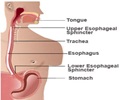Dr Hanna Rahbek Mortensen and colleagues at hospitals and institutes in Denmark presented results from a large prospective trial, the DAHANCA 6 & 7 study

"These results are very important," said Dr JA Langendijk from the University Medical Center of Groningen, The Netherlands. "Today, with the increasing use of intensity modulated radiotherapy (IMRT), the dose to the salivary glands is reduced resulting in lower risks on xerostomia (dry mouth). However, swallowing dysfunction is remaining an important side effect following irradiation in the head and neck region. Therefore, the identification of patients that are at highest risk for dysphagia, in particular late and persistent, is of major importance as this will help us to provide them with preventive measures", said Dr Langendijk.
Gastric tubes insertion and swallowing exercises could be prescribed and prevent malnutrition and weight loss. "This study will be very helpful to improve the quality of life of patients," noted Dr Mortensen. "Indeed, these measures at an early stage of the treatment will considerably reduce swallowing disorders".
But the results will also lead to a better treatment. "Dysphagia is a limiting factor for further intensification of head and neck radiotherapy. This is why the knowledge provided here may help us to better tailor treatments for the patients: it may allow us to increase the intensity of the treatment while maintaining their quality of life," concluded Dr Mortensen.
Source-Eurekalert















